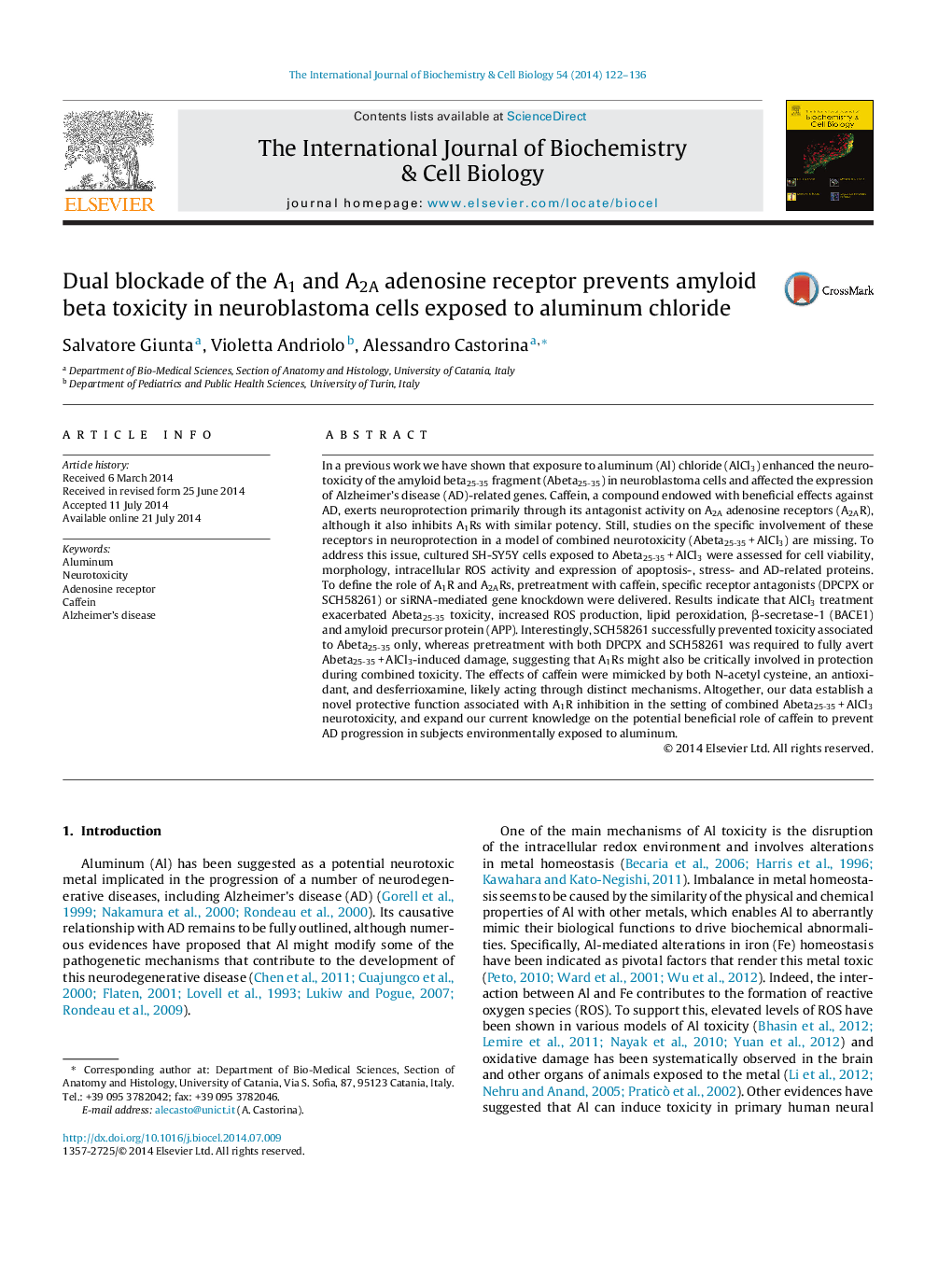| کد مقاله | کد نشریه | سال انتشار | مقاله انگلیسی | نسخه تمام متن |
|---|---|---|---|---|
| 8323215 | 1539890 | 2014 | 15 صفحه PDF | دانلود رایگان |
عنوان انگلیسی مقاله ISI
Dual blockade of the A1 and A2A adenosine receptor prevents amyloid beta toxicity in neuroblastoma cells exposed to aluminum chloride
دانلود مقاله + سفارش ترجمه
دانلود مقاله ISI انگلیسی
رایگان برای ایرانیان
کلمات کلیدی
موضوعات مرتبط
علوم زیستی و بیوفناوری
بیوشیمی، ژنتیک و زیست شناسی مولکولی
زیست شیمی
پیش نمایش صفحه اول مقاله

چکیده انگلیسی
In a previous work we have shown that exposure to aluminum (Al) chloride (AlCl3) enhanced the neurotoxicity of the amyloid beta25-35 fragment (Abeta25-35) in neuroblastoma cells and affected the expression of Alzheimer's disease (AD)-related genes. Caffein, a compound endowed with beneficial effects against AD, exerts neuroprotection primarily through its antagonist activity on A2A adenosine receptors (A2AR), although it also inhibits A1Rs with similar potency. Still, studies on the specific involvement of these receptors in neuroprotection in a model of combined neurotoxicity (Abeta25-35 + AlCl3) are missing. To address this issue, cultured SH-SY5Y cells exposed to Abeta25-35 + AlCl3 were assessed for cell viability, morphology, intracellular ROS activity and expression of apoptosis-, stress- and AD-related proteins. To define the role of A1R and A2ARs, pretreatment with caffein, specific receptor antagonists (DPCPX or SCH58261) or siRNA-mediated gene knockdown were delivered. Results indicate that AlCl3 treatment exacerbated Abeta25-35 toxicity, increased ROS production, lipid peroxidation, β-secretase-1 (BACE1) and amyloid precursor protein (APP). Interestingly, SCH58261 successfully prevented toxicity associated to Abeta25-35 only, whereas pretreatment with both DPCPX and SCH58261 was required to fully avert Abeta25-35 + AlCl3-induced damage, suggesting that A1Rs might also be critically involved in protection during combined toxicity. The effects of caffein were mimicked by both N-acetyl cysteine, an antioxidant, and desferrioxamine, likely acting through distinct mechanisms. Altogether, our data establish a novel protective function associated with A1R inhibition in the setting of combined Abeta25-35 + AlCl3 neurotoxicity, and expand our current knowledge on the potential beneficial role of caffein to prevent AD progression in subjects environmentally exposed to aluminum.
ناشر
Database: Elsevier - ScienceDirect (ساینس دایرکت)
Journal: The International Journal of Biochemistry & Cell Biology - Volume 54, September 2014, Pages 122-136
Journal: The International Journal of Biochemistry & Cell Biology - Volume 54, September 2014, Pages 122-136
نویسندگان
Salvatore Giunta, Violetta Andriolo, Alessandro Castorina,